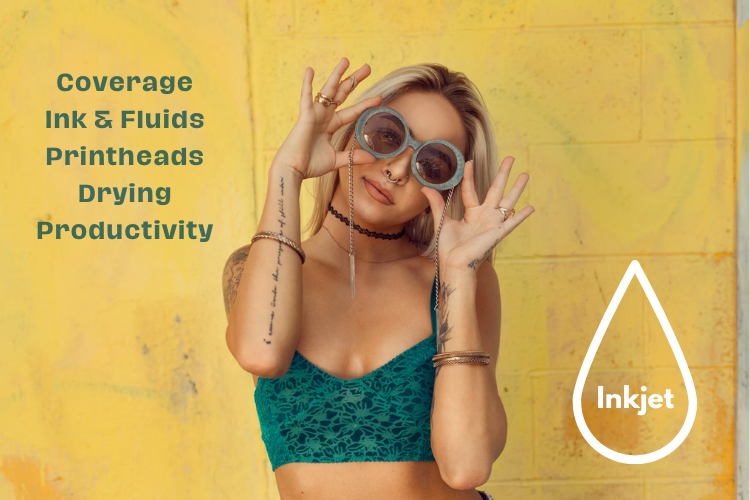Most, nearly all, of the recent inkjet developments in production printing have been focused on gaining market share in the graphic arts segment. Canon, HP, Kodak, Komori, Konica Minolta, Kyocera, Landa, Ricoh and Screen all have launched new or upgraded presses in the past year focused on this hard-to-serve market. It’s no surprise that most research and development efforts are being expended in this area. Applications like commercial marketing collateral, magazines, catalogs, and photo-books remain a large untapped market for inkjet with the significant majority of work still printed using other processes.
Printing companies seeking to use inkjet presses to delivery high quality graphic arts applications demand a press capable of producing heavy coverage on coated and uncoated media while drying the media without damage. This balancing act was overcome only recently yet there are numerous OEMs vying for market share today, sometimes with multiple models in the segment. This article provides a snapshot of questions and considerations to help customers quickly narrow the field, with links to additional Inkjet Insight resources to support buyers.

Evaluating inkjet for Graphic Arts? Ask about these 5 things.
1. Coverage: It is common for graphic arts work to require total ink coverage (TAC) approaching 300% but requirements may vary significantly. Understand the maximum TAC the press can support on coated and uncoated stocks and any speed reductions needed to support increased levels of coverage. Also consider the variations in your work. Is all your work high coverage or do you have a mix of applications that will impact your best-fit press? Don’t overlook variations in coverage levels or the relative cost of ink when estimating total cost of ownership.
2. Ink: There are a couple of new B2 sheetfed presses using UV ink, but the focus of graphic arts development has been on water-based inks for nearly a decade. UV inks are significantly more expensive than aqueous inks, but that gap varies widely. Some water-based inks have a complex chemistry that eliminates, or reduces, the need for pretreatment. These inks are more expensive, but that cost is offset, in part, by reduced pretreatment costs (which are never needed with UV inks.) If pretreatment is used, understand how it is applied. It is more cost effective to use primer only when and where needed, but some presses flood coat the sheet. Some presses indicated that pretreatment is not required but offer it as an option. Look carefully at the different in performance with and without the option, if offered. When considering a press where priming is optional (not standard) test quality in both modes.
3. Printheads: there are piezoelectric, thermal and continuous inkjet printheads all producing stellar quality today. It’s important to understand specific features of the printheads for supporting the type of work you do. Ask about features like head capping, recirculation, automatic head wiping and any other features intended to reduce clogged nozzles that result in print defects. Understand native print resolution as well as nozzle redundancy and gray levels. Ask if printheads are “long-life” parts or treated as consumables as this will greatly impact your running costs. Keep in mind that the state-of-the-art in all of the main printhead technologies has advanced rapidly. When conducting research, ensure that your data is recent and don’t trust AI sources as the supporting foundation model is likely dated.
4. Drying: there are many kinds of drying technology and graphic arts presses usually employ multiple approaches involving heating, airflow and near infrared (NIR) technology. Some presses have highly modular configurations intended to provide the level of drying needed at the lowest cost. However, it is critical to get the right amount of drying power for the work you do, so be careful about settling for a lower level of drying. The level of heat and inclusion of cooling and humidity control are also important for proper drying. High coverage combined with high heat can cause more problems than it solves.
5. Productivity: OEMs usually quote the top speed that the press will run. You will want to understand press productivity. Do coverage levels, desired resolution or media type limit speed? What percentage of the work you do will be run at top speed? For continuous presses, ask if the press can begin printing while “ramping up” to full speed. Even the fastest press is not productive when it is not running at all so ask about the impact of maintenance requirements. The availability of additional tools like inspection systems and automatic winding and splice management can greatly boost productivity. For more on the capabilities that make inkjet go fast, see “We love fast inkjet” and “Making inkjet go faster” which include input from multiple OEMs using different types of printheads.
Naturally, print quality will be of great interest but that is an area where simply asking will not help you. It’s fun and interesting to collect print samples at trade events, but not terribly informative. Print quality comparisons are only valid when driven by data in controlled and documented conditions. For best results, request comparative samples on multiple substrates that you can objectively measure for chroma, density and clarity after the event. Check out these guidelines on using data to drive your print quality comparisons.

